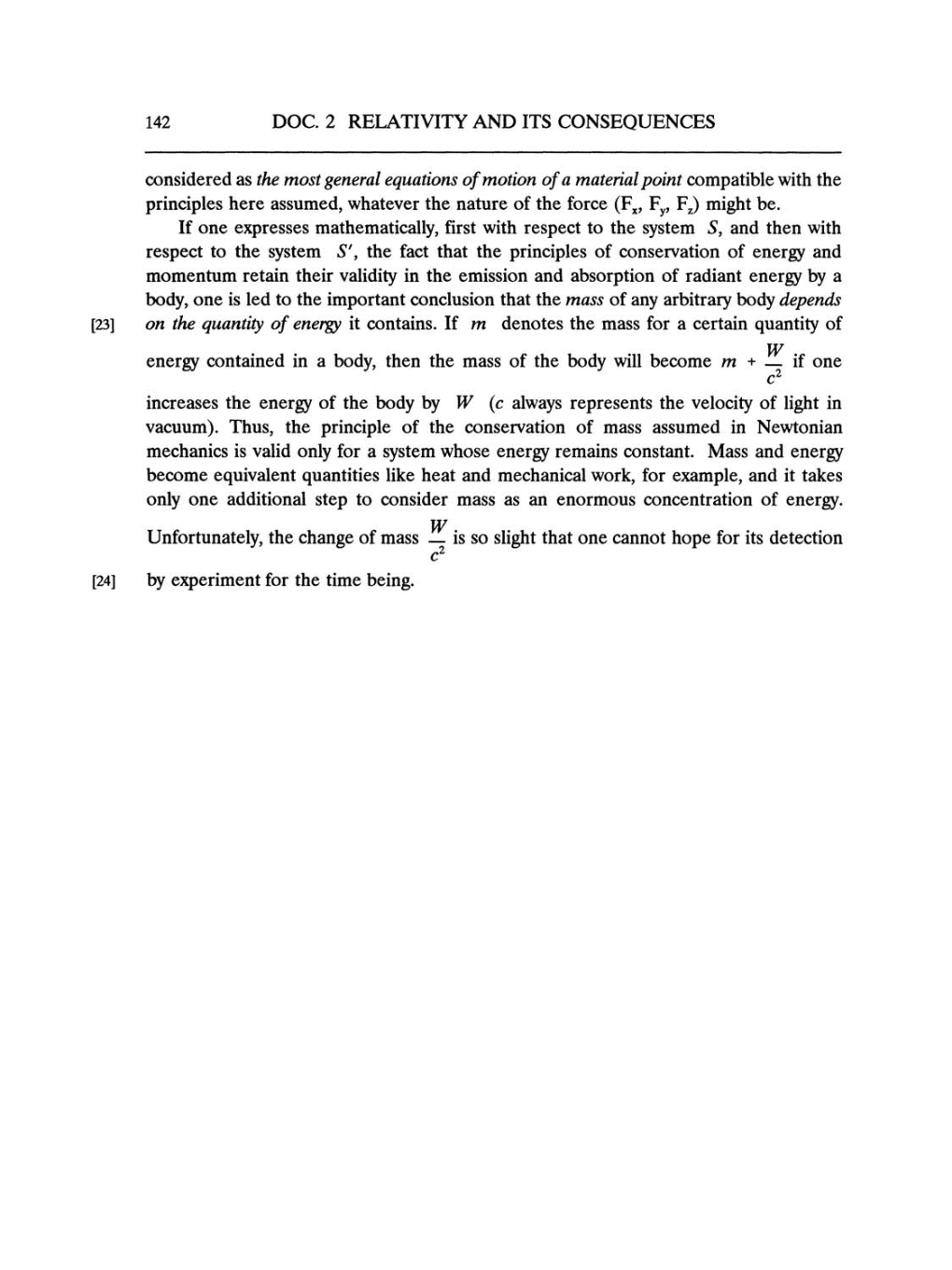142
DOC.
2
RELATIVITY AND
ITS CONSEQUENCES
considered
as
the
most
general
equations
of motion of
a
material
point
compatible
with
the
principles
here
assumed,
whatever the
nature
of the
force
(Fx,
Fy,
Fz)
might
be.
If
one expresses mathematically,
first with
respect
to
the
system S,
and then
with
respect to
the
system
S',
the
fact
that the
principles
of conservation of
energy
and
momentum
retain their
validity
in
the
emission and
absorption
of radiant
energy by a
body, one
is
led to
the
important
conclusion
that the
mass
of
any
arbitrary
body depends
[23]
on
the
quantity
of
energy
it
contains.
If
m
denotes the
mass
for
a
certain
quantity
of
W
energy
contained
in
a body,
then the
mass
of the
body
will
become
m +
-
if
one
c2
increases the
energy
of the
body by
W
(c always
represents
the
velocity
of
light
in
vacuum). Thus,
the
principle
of the
conservation of
mass
assumed
in Newtonian
mechanics is valid
only
for
a
system
whose
energy
remains
constant. Mass and
energy
become
equivalent quantities
like
heat and
mechanical
work,
for
example,
and
it
takes
only one
additional
step
to
consider
mass as an enormous
concentration of
energy.
W
Unfortunately,
the
change
of
mass
_
is
so
slight
that
one
cannot
hope
for
its
detection
c2
[24]
by
experiment
for the
time
being.
